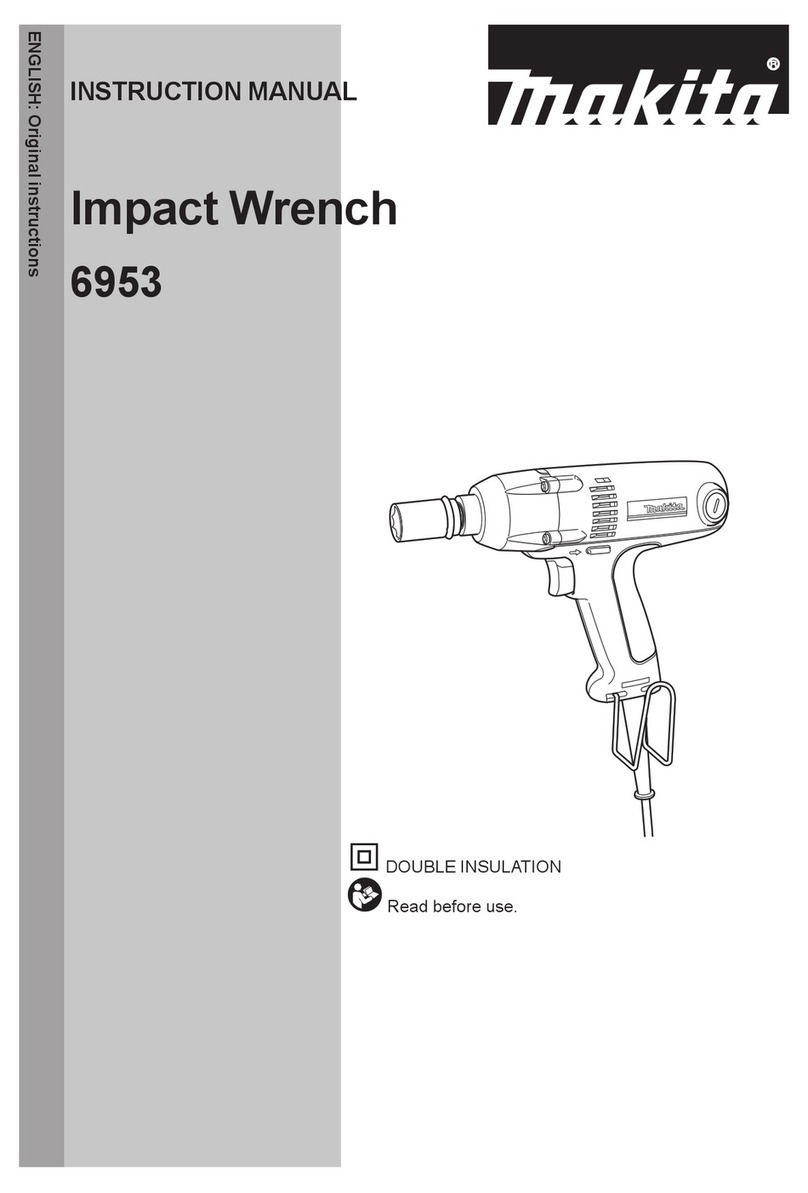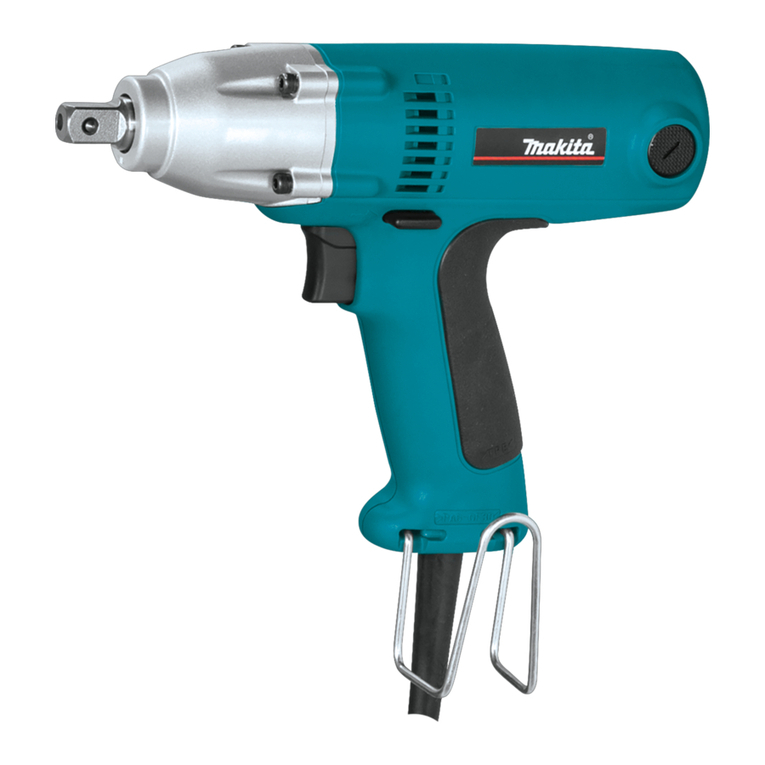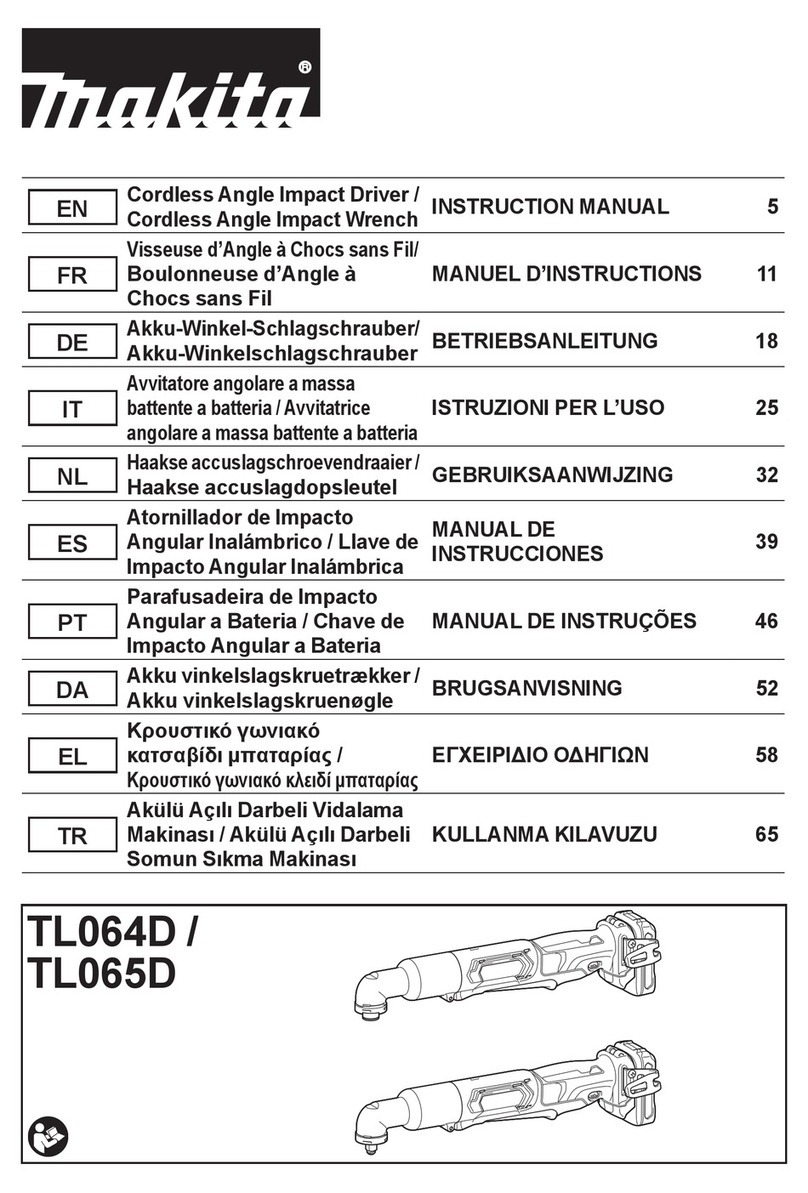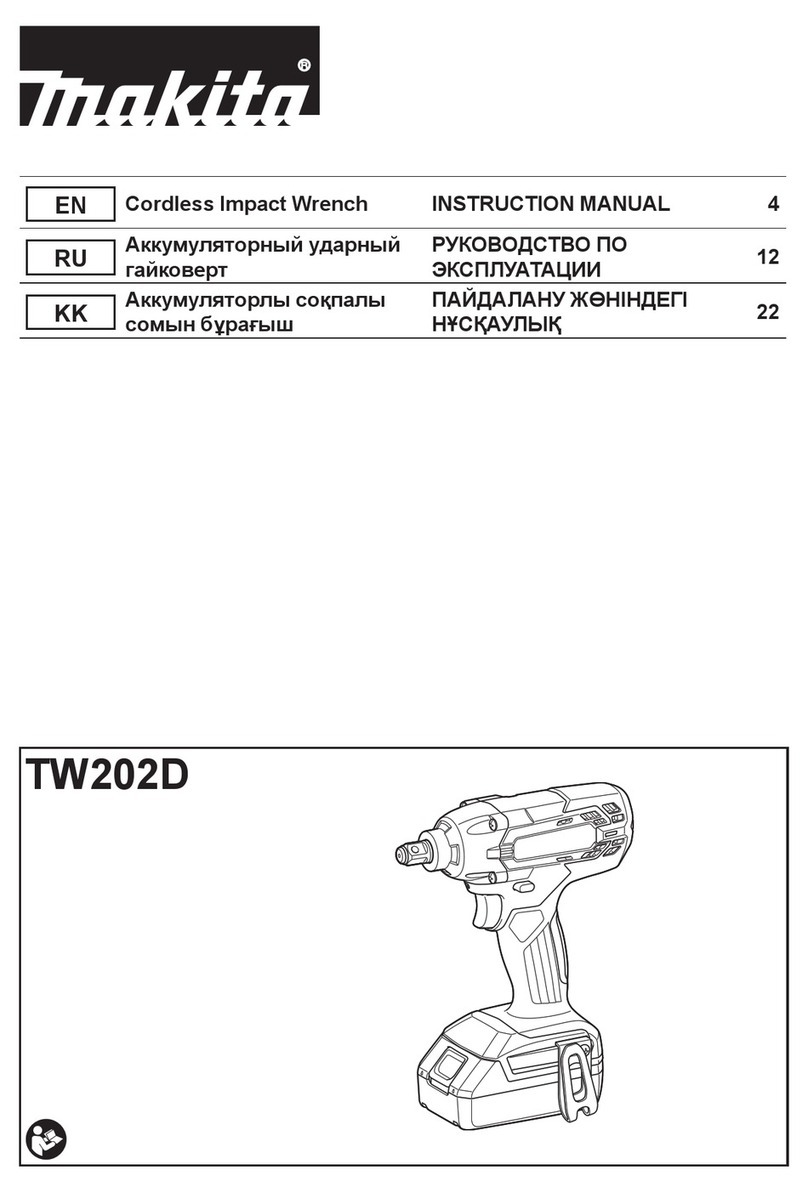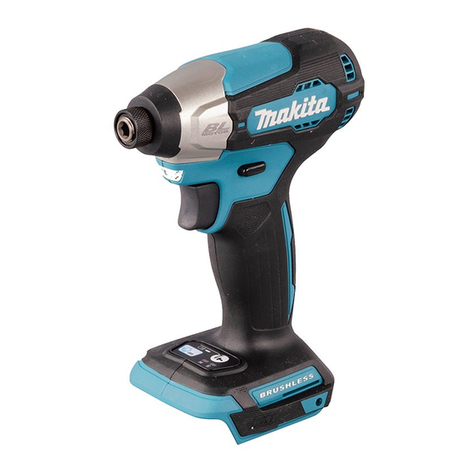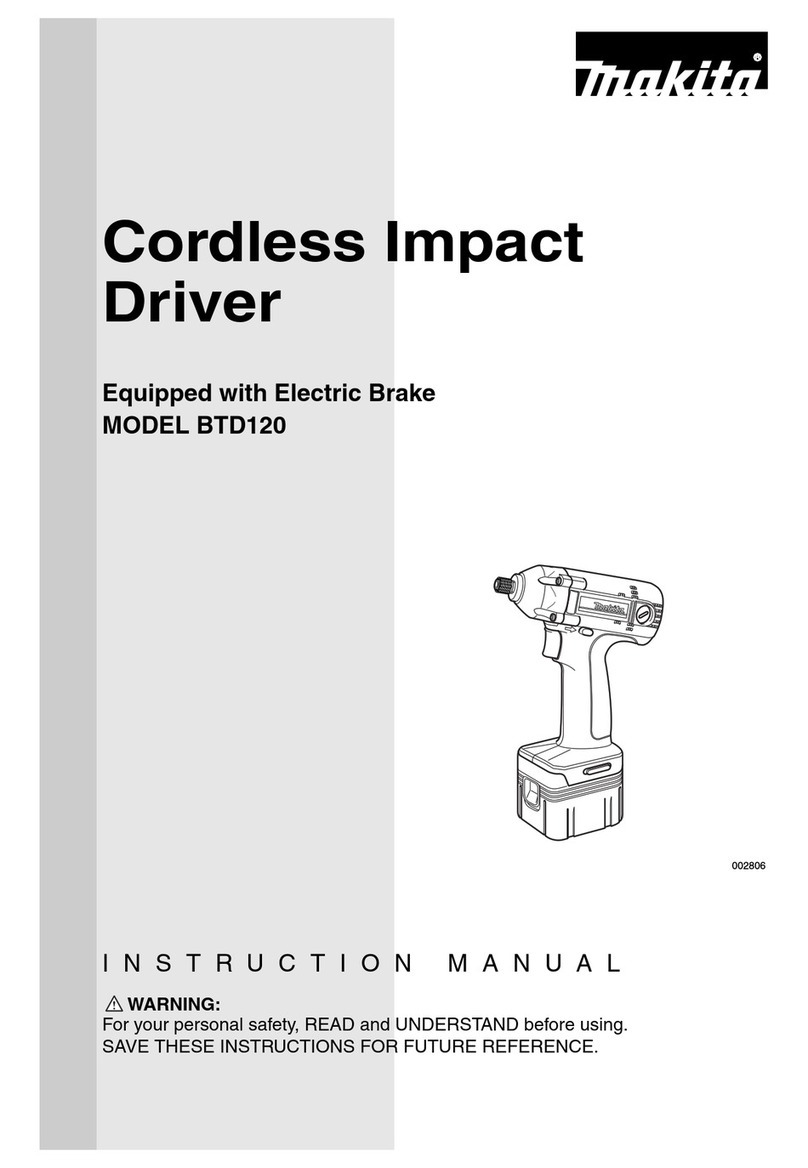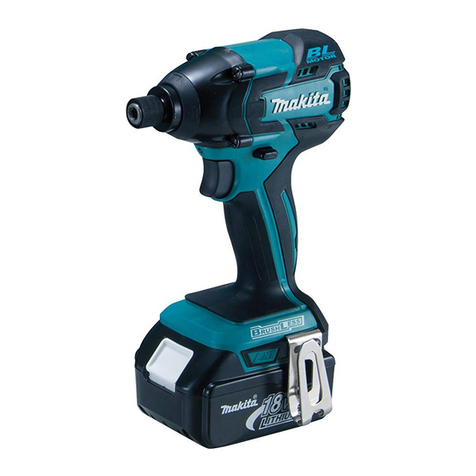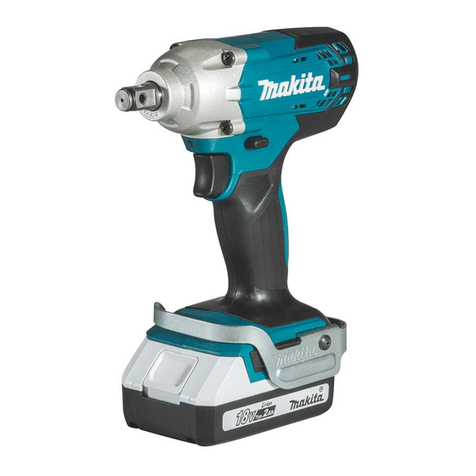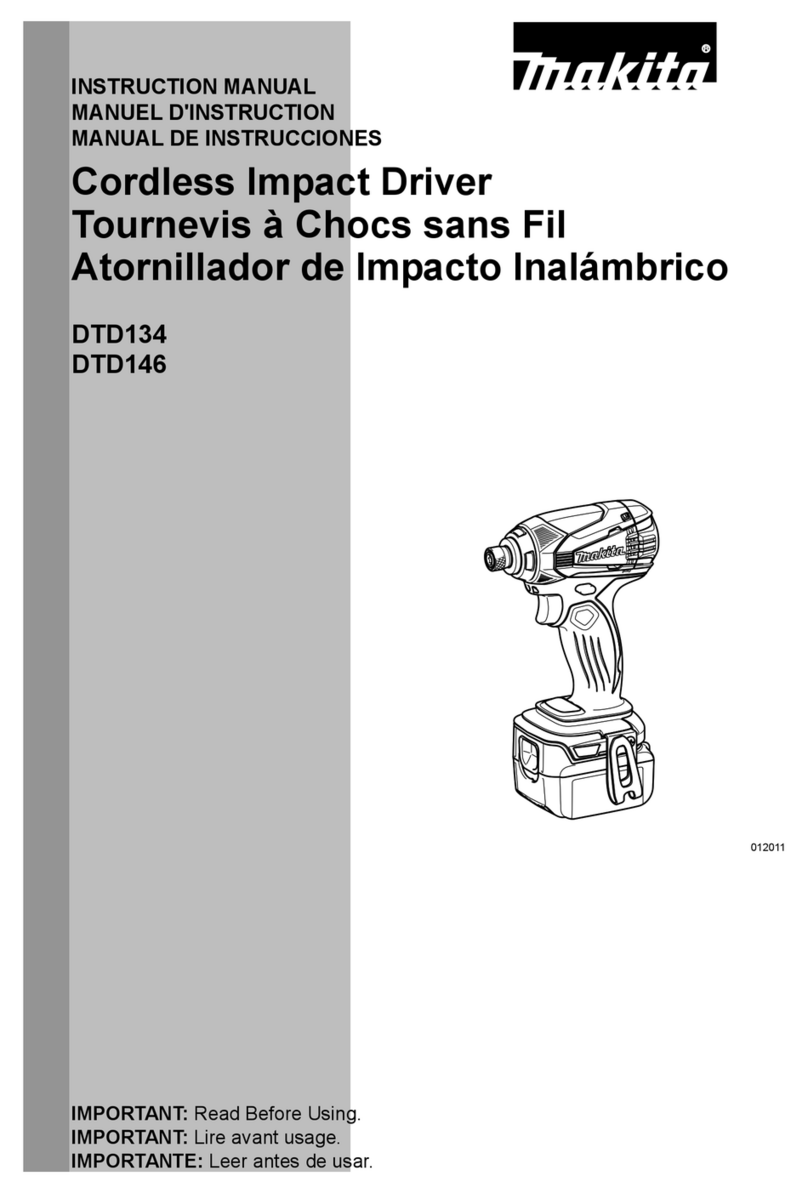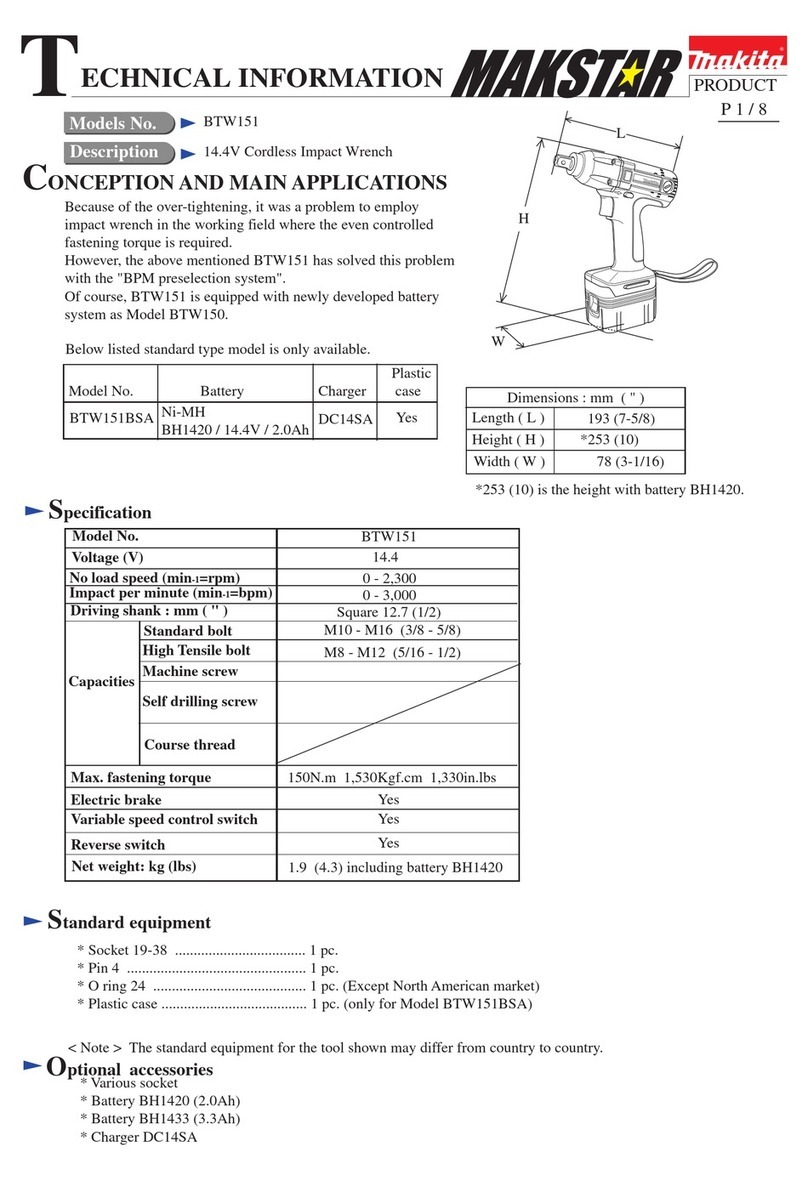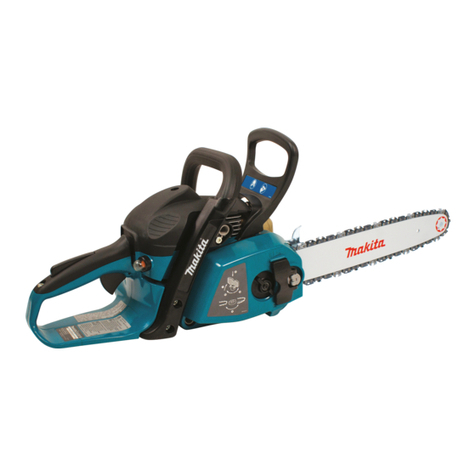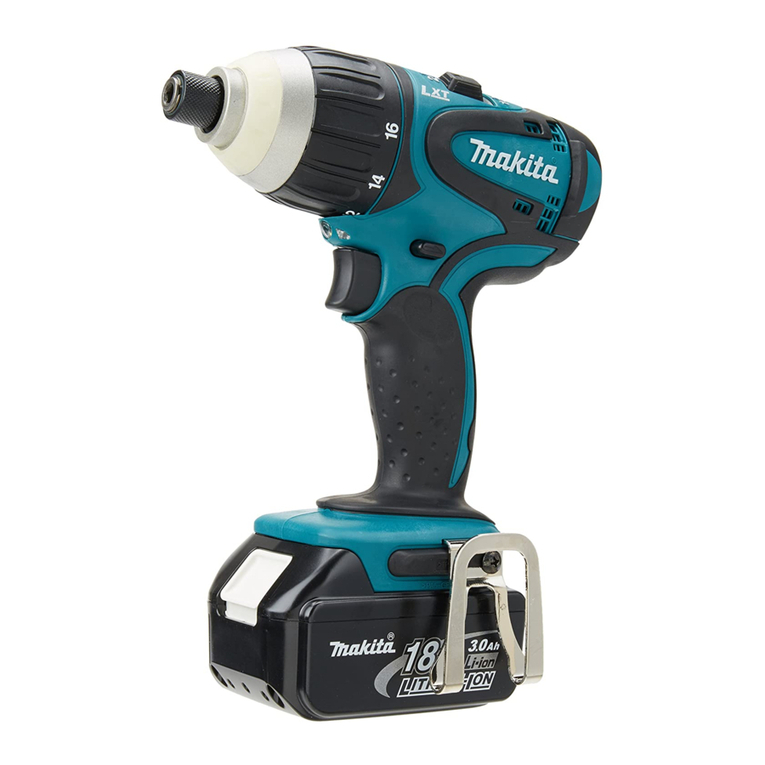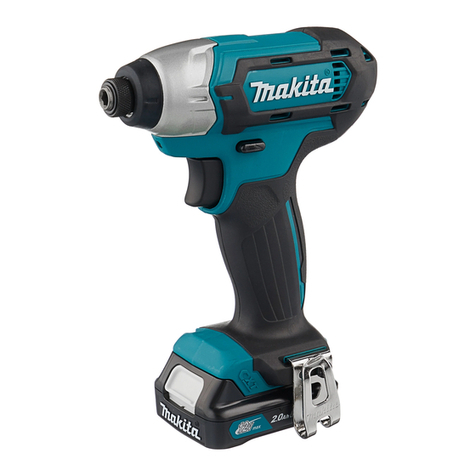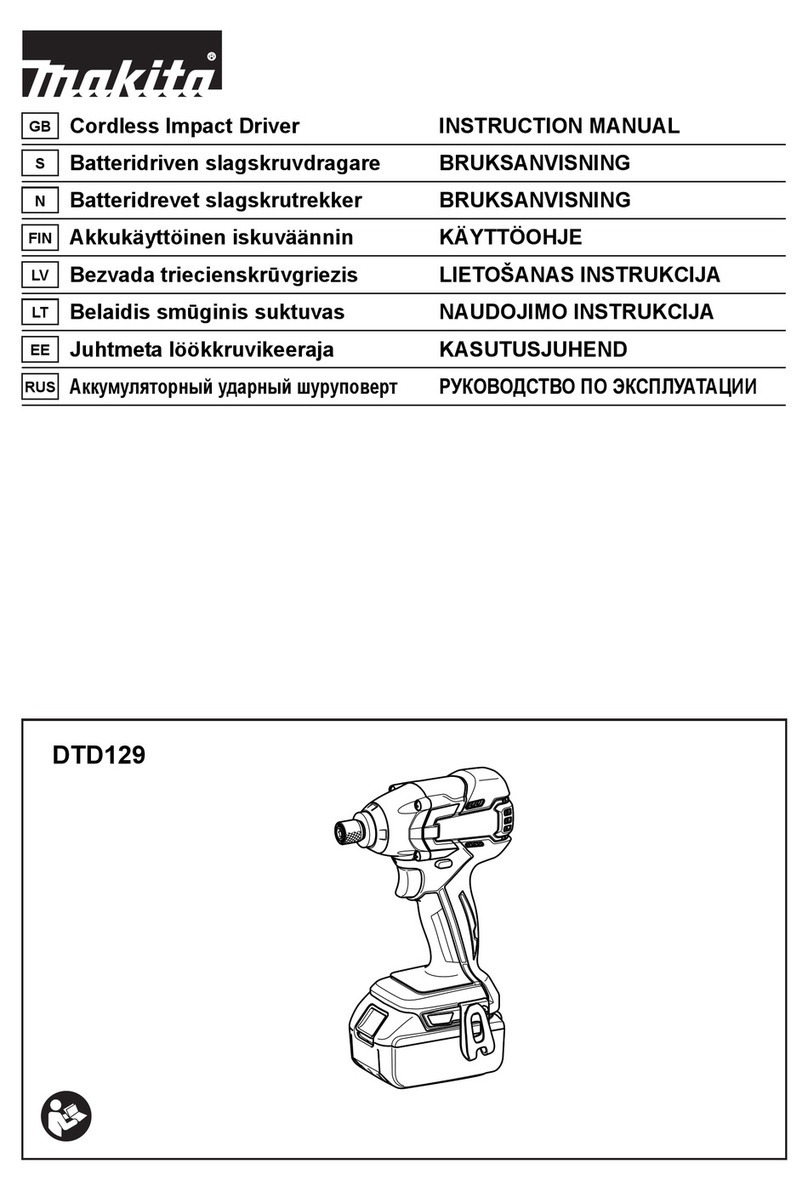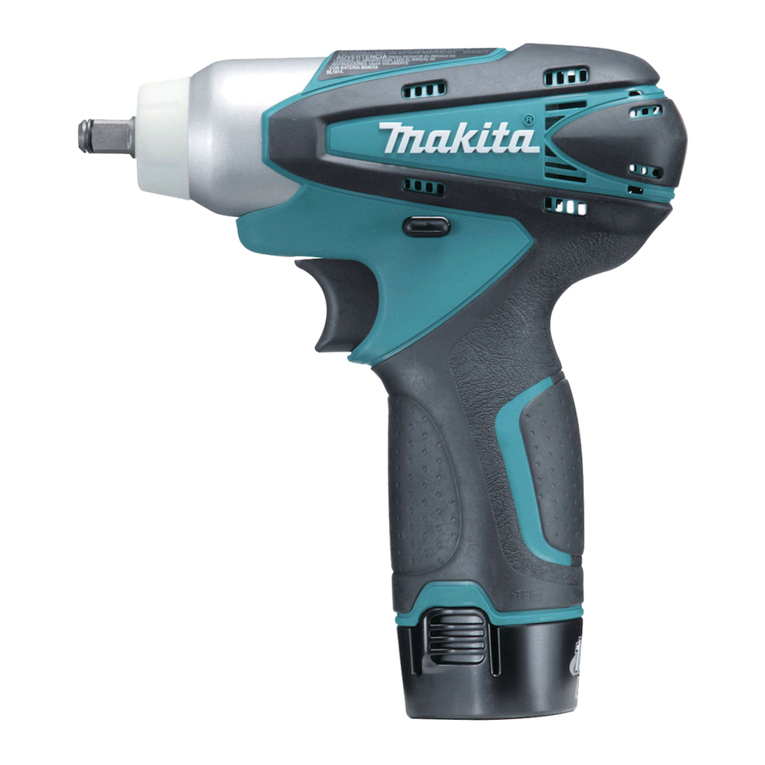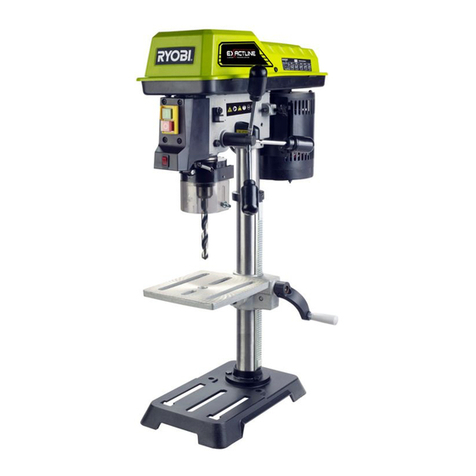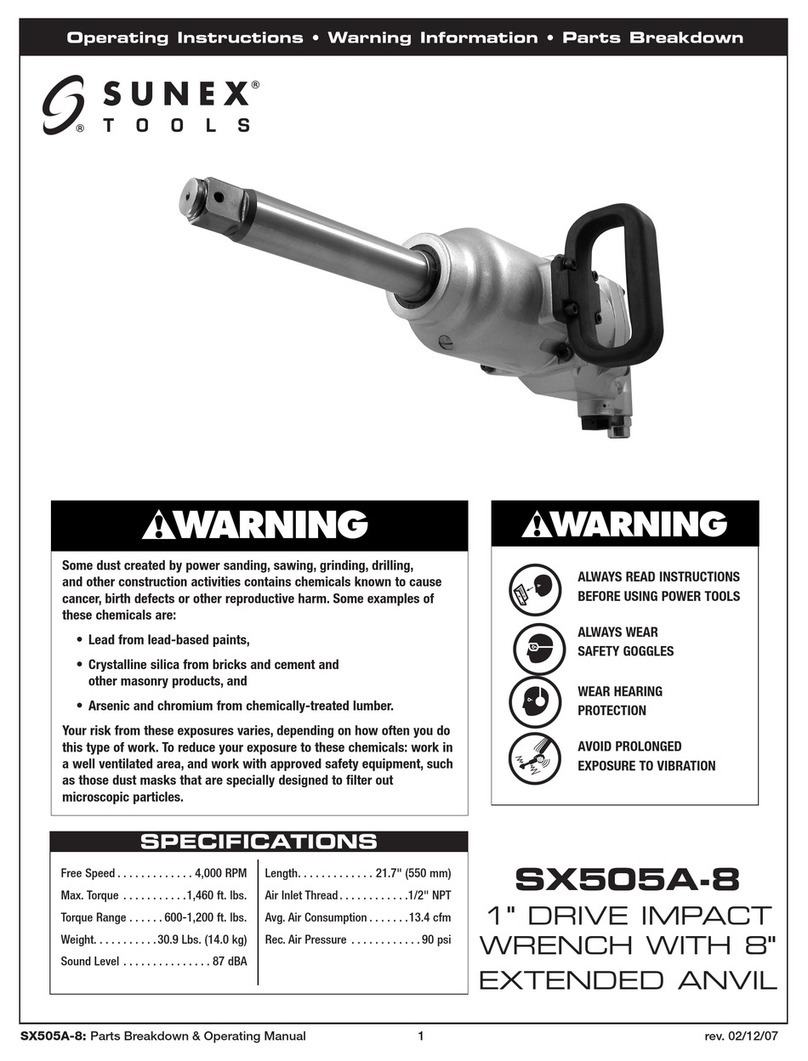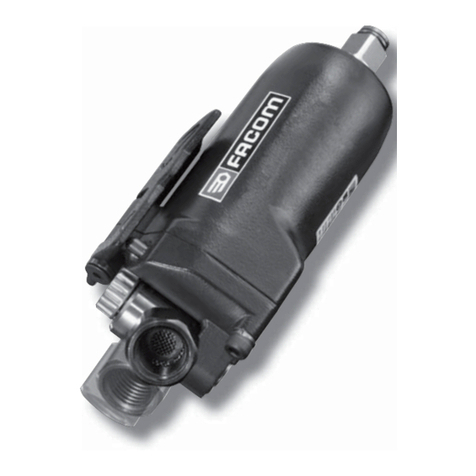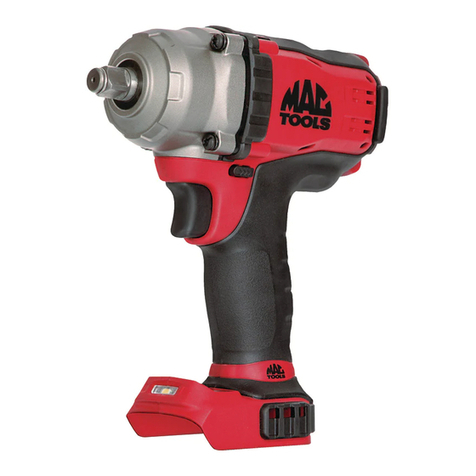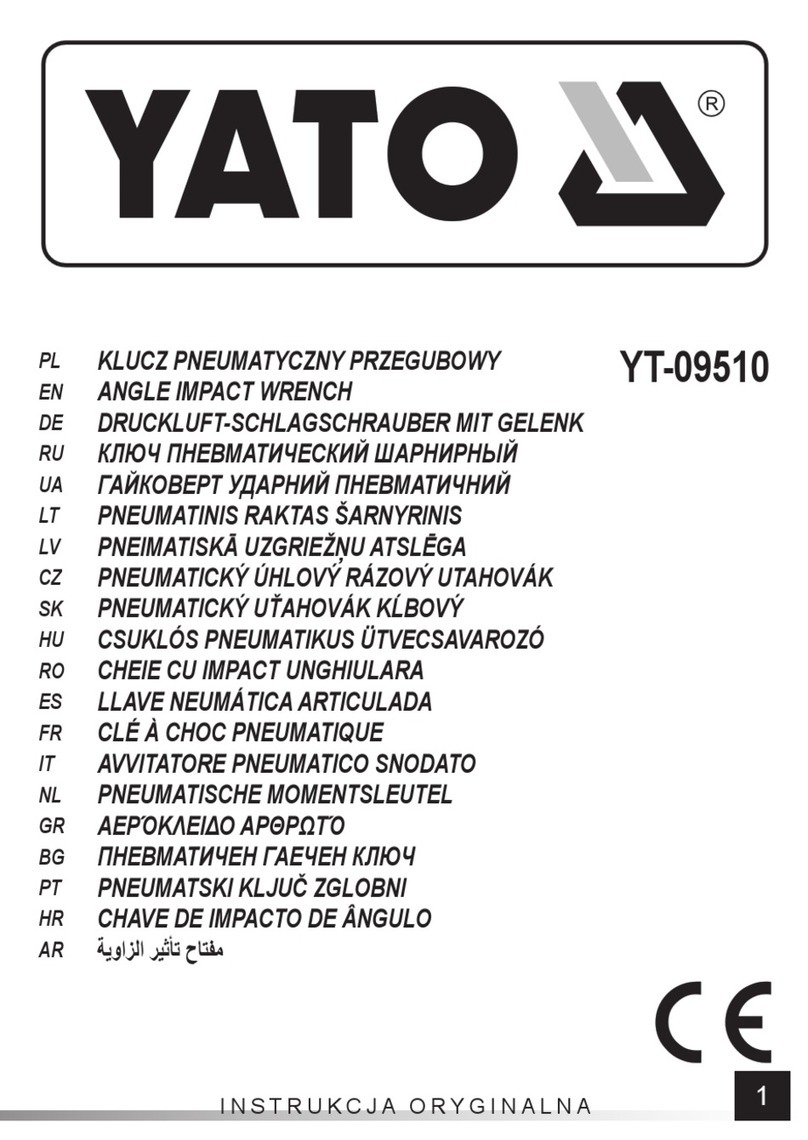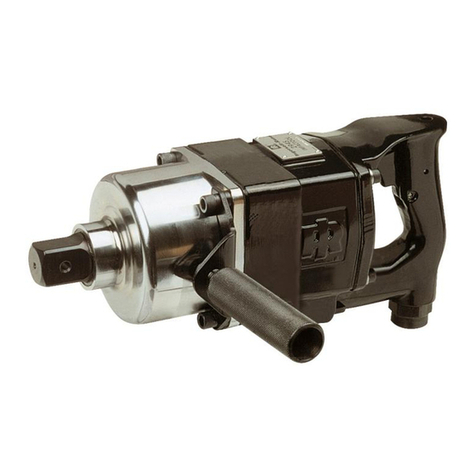P 2/9
[2] LUBRICATION
Apply the following lubricants to protect parts and product from unusual abrasion:
*Makita grease N No.2 to the Portions designated with
*Makita grease FA No.2 to the portions designated with
[1] NECESSARY REPAIRING TOOLS
CAUTION: Remove the battery from the machine for safety before repair/ maintenance
in accordance with the instruction manual!
Fig. 1
Repair
DescriptionCode No.
1R041 Vise Plate Protecting Hammer case, when fixing it with Vise
1R045 Gear Extractor (large) Disassembling Hammer section
1R223 Torque Wrench Shaft 20-90N.m Disassembling Hammer case
1R346 Center Attachment Attaching to 1R045
1R224 Ratchet Head 9.5 Attaching to 1R223, when disassembling Hammer case
1R232 Pipe 30 Supporting Anvil to remove Sleeve easily
1R288 Screwdriver Magnetizer Removing Steel balls
1R291 Retaining Ring S & R Pliers Disassembling Sleeve
134847-1 Socket 30-78 Disassembling Hammer case
134848-9 Socket 32-50 Fixing Bearing box, when removing Hammer case
Use for
Item No. Description Portion to lubricate
Anvil
16 Hammer case complete Sleeve 14 that accepts Anvil
21 Steel ball 3.5 (24 pcs) Whole Portion
25 Steel ball 5.6 (2 pcs) Whole Portion
27 Spindle
27a: Top portion that contacts Anvil
27b: Hole for Armature’s gear
Hammer
Flat washer 24
Cup washer 14
Flat washer 12
Internal gear 51
Bearing box
Armature
Compression spring 24
Makita grease
FA No.2 a little
Makita grease
FA No.2 a little
AmountLubricant
Makita grease
N.No.2 a little
Makita grease
N.No.2 2g


